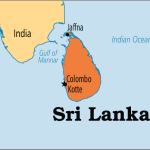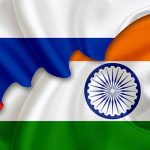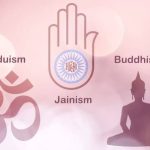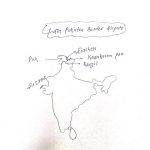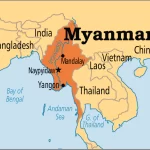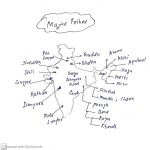Indonesia has more than 17,000 islands, making it the largest island country in the world. It is home to the 4th most people in the world. It is the country with the most Muslims. India has the second-highest number of Muslims. Java is the island with the most people on it. It is in Indonesia.
India and Indonesia have had close cultural and business ties for over 2,000 years. From India, the Hindu, Buddhist, and later Muslim religions spread to Indonesia. Stories from the great epics Ramayana and Mahabharata are used in Indonesian folk art and plays. The shared culture, colonial past, and post-independence goals of political sovereignty, economic self-sufficiency, and independent foreign policy bring the two countries closer together.
Jawaharlal Nehru and President Sukarno, who were in charge of their countries’ governments, worked closely together to help Asian and African countries gain their independence. Later, at the Asian-African Conference in Bandung in 1955, they laid the groundwork for the Non-Aligned Movement. Since India’s “Look East Policy” was put into place in 1991, political, economic, defence, commercial, and cultural ties between the two countries have grown quickly.
During the State Visit of President Susilo Bambang Yudhoyono in 2005, they signed the “Joint Declaration on Establishing a Strategic Partnership.” This gave the many different parts of their friendship a boost.
This is clear from the fact that the two countries’ relationship was upgraded to a “Comprehensive Strategic Partnership” in May 2018 and that they set up new ways to work together, such as a “bilateral security dialogue,” a “trilateral dialogue,” and the signing of a “enhanced Defence Cooperation Agreement.”
Table of Contents
Areas of Cooperation : Relations in Commercial and Economics
• Indonesia is important to India because it is the biggest country in ASEAN, with more than 37% of the people and more than 33% of the total GDP. It is also a member of the G-20, which India is also.
• India’s biggest trade partner in the ASEAN region is now Indonesia. From 2005-2006 to 2016-2017, trade between the two countries went from US$ 4.3 billion to US$ 17 billion.
• India is the second biggest buyer of coal and crude palm oil from Indonesia. It also buys minerals, rubber, pulp and paper, and hydrocarbons stocks from Indonesia.
• India sends Indonesia refined oil products, maize, commercial vehicles, tools for telecommunications, oil seeds, animal feed, cotton, steel products, and plastics.
Security Ties:
• The close defence ties between India and Indonesia have been growing steadily, with the two countries’ armed forces regularly working together and exchanging people. In 2005, they signed a strategic partnership deal that set up a strategic dialogue that takes place every year. The following year, they ratified a defence cooperation agreement that had been made in 2001. This agreement focused on defence supplies, technology, and joint projects.
• In their joint comments, they started by condemning all kinds of terrorism and calling on all countries to work to get rid of terrorist safe havens and infrastructure, disrupt terrorist networks and their ways of getting money, and stop terrorism that crosses borders.
• Both countries want to become big players in the sea. Also, Indonesia will give India access to the important island of Sabang, which is near the Malacca Strait and the northern tip of Sumatra. This would help India become a provider of net protection in the area around the Indian Ocean.
• Bilateral Exercises: drill Samudra Shakti is a maritime drill between India and Indonesia, and Garuda Shakti is a military exercise between India and Indonesia that both countries take part in.
Diaspora and culture Relations:
• There is a lot of culture exchange between the two countries. The Jawaharlal Nehru Indian Cultural Centre (JNICC) is run by the Indian Mission. It offers daily classes in Indian classical music, Indian classical dance (Kathak and Bharatnatyam), Yoga, and the languages Hindi and Tamil.
Sahabat India
• On January 26, 2015, Her Excellency Ms. Megawati Soekarnoputri, who used to be the President of Indonesia, opened the Festival of India in Indonesia. During the Festival of India, more than 35 different events, like folk dances, dance dramas, etc., were held in some of Jakarta’s best venues. About 100,000 people in Indonesia are from India. Most of them live in Greater Jakarta, Medan, Surabaya, and Bandung. Most of what they do is trade, mostly with textiles and sports things.
Indian Ocean Region:
The states along the coast of the Indian Ocean have also seen steady growth over the past few years. India and Indonesia are natural partners in ensuring the development and security of the Indian Ocean and the pacific littoral region. Their maritime trade is growing, and they share a maritime boundary along the Andaman Sea. All trade routes and sea lanes must be protected from traditional and non-traditional threats, and all countries using these international waters must act responsibly and with restraint. Because Indonesia is in a good spot, it can be a link between the Indian and Pacific Oceans. As one of the most important countries on the Asia-Pacific rim, Indonesia is in a good position to connect South Asia to the Pacific area.
Challenges in India-Indonesia Relations:
• Even after the Comprehensive Economic Partnership with India, Indonesia would be hesitant to go against China’s interests because of its strong relationship with China since the Cold War.Both India and Indonesia were founders of the Non-alignment movement, which led to good relations between the two countries after freedom. However, these relations got worse as India moved closer to the USSR and Indonesia moved closer to the US. Indonesia helped Pakistan during India’s war with Pakistan. •In the Andaman Sea, the sea lines between the two countries have not yet been set. During the visit, both sides said again that they wanted to find a solution as soon as possible.




![UPSC CSE Topper Mains Answer [Part 1] images-2023-06-17T191749.185](https://iasbio.com/wp-content/uploads/2023/06/images-2023-06-17T191749.185-150x150.jpeg)

